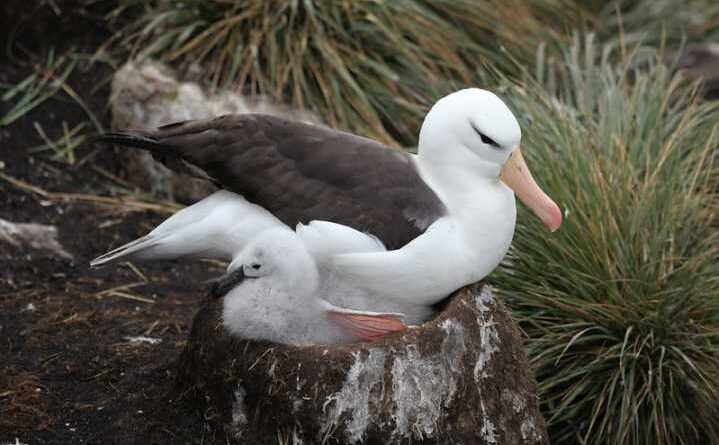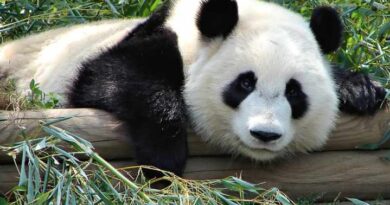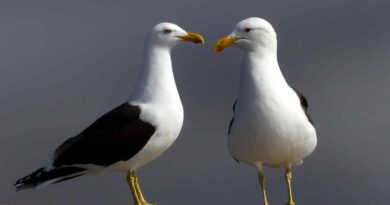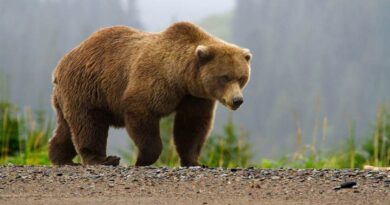ALBATROSSE
ALBATROSSES are a group of 14 big, long-winged gliding seabirds that belong to the Diomedeidae family of tubenose birds. They range in size from 28 to 53 inches (17-135 cm) in length and have a wide wing span, with the longest reaching 11 feet (3-5 m).
Albatrosses have white or brown plumage and are stoutly built. The head is huge, with a powerful, hooked bill and nostrils that open through horny tubes. The legs are short, the hind toe is absent or rudimentary, and the other three toes are webbed. Except in the Wandering albatross Diomedea exulans, the sexes are similar.
Albatrosses are divided into two genera: Diomedea, which has 12 species, and Phoebetria, which has two species. South of the equator, all albatrosses breed except four. They spend the most of their time in the air when they are not on the nesting grounds. They devour almost every type of surface-dwelling marine species.
Diomedea albatrosses nest in large colonies, usually on remote Pacific islands. Nests range in size from a simple scrape to a 1 ft (30 cm) or higher conical mound of turf or dirt lined with feathers and grasses. There is only one egg, the white of which is frequently flecked with red-brown. Incubation is shared by both sexes and lasts anywhere from 65 days in smaller species to 70-80 days in bigger species.
Albatrosses perform complex courtship displays that include a range of calls according on the species. Except for the Waved albatross Diomedea irrorata, which lays its eggs in May and June, all albatrosses lay their eggs between September and January. The albatross’ nesting season is extremely long, to the point where the larger species cannot reproduce every year. For the first week or so, both sexes feed the chick regularly by regurgitation, then less frequently.
The most serious threat to the albatross chick is skua predation. The two Phoebetria species do not reproduce in huge colonies. They can be found in the South Atlantic and Indian Oceans at temperate subantarctic latitudes. They establish their nests on inaccessible cliff shelves, are more man severable, and are generally lighter on the wing than other albatrosses.
Albatrosses have a remarkable ability to glide and sail for long periods of time. A high air speed is required for this. Albatrosses have the largest aspect ratio (length to breadth ratio) of any bird, ranging from 20 to 25. This is the shape that is most well-suited to gliding. The albatross is well-adapted to ‘dynamic soaring,’ which is a type of flying that takes advantage of the difference in wind speed between winds at sea level and those at a higher altitude, usually up to 50 feet. As a result, the albatross may fly for miles without making a single wingbeat.
Albatrosses have been severely harmed. As a result of human activities over time. They’ve always been exploited for food, and they suffered greatly in the late 1800s when their plumage became in high demand for women’s hats. The Pacific albatross colonies were severely threatened during WWII. On Midway Atoll, where there was once a robust albatross colony, many people have been slaughtered. When threatened, albatrosses spew their stomach contents with force and precision. For most animals, this is an effective deterrent, but not for humans. ORDER: Procellariiformes, FAMILY: Diomedeidae, FAMILY: Diomedeidae, FAMILY: Diomedeidae, FAMILY: AVES is a class of animals.



